Carved Rattle (Shisha) Item Number: E89078-0 from the National Museum of Natural History
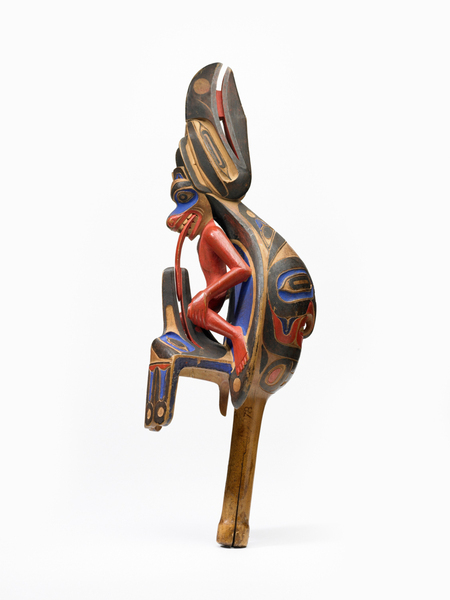
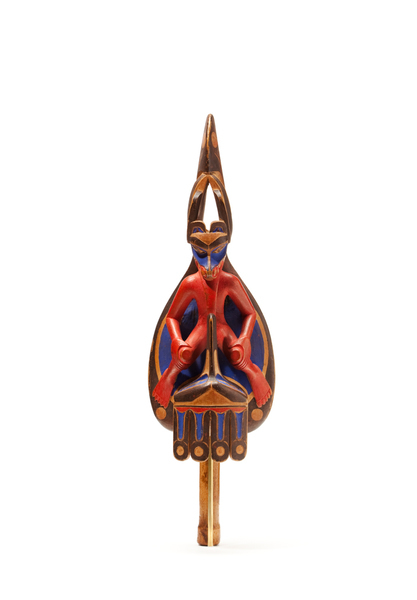
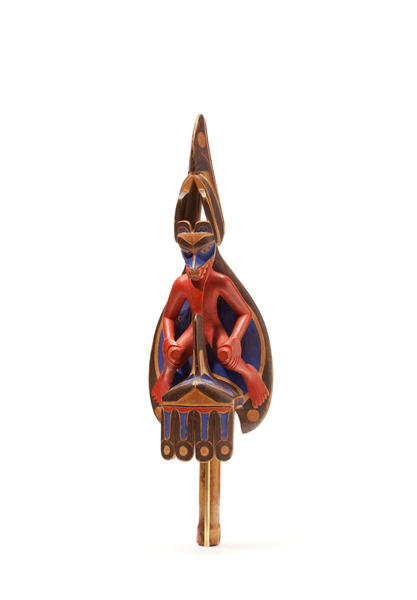
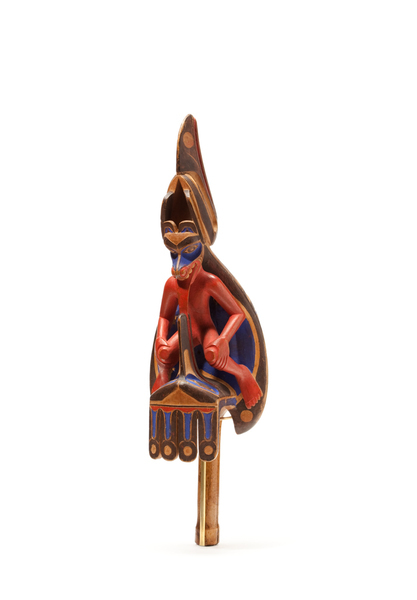


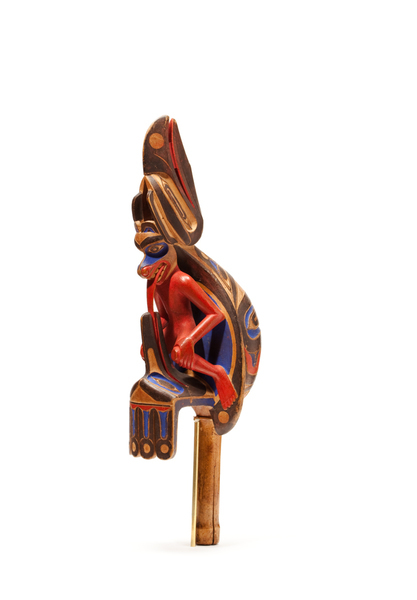
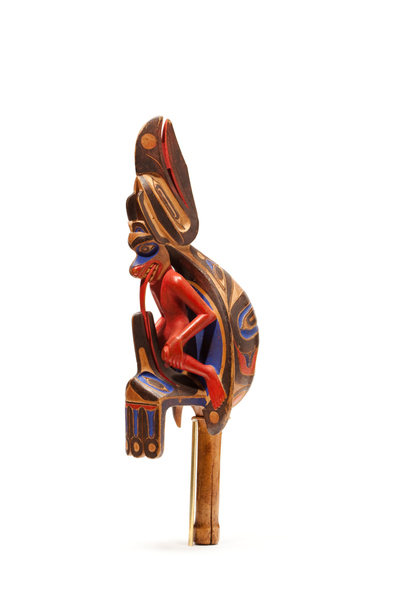

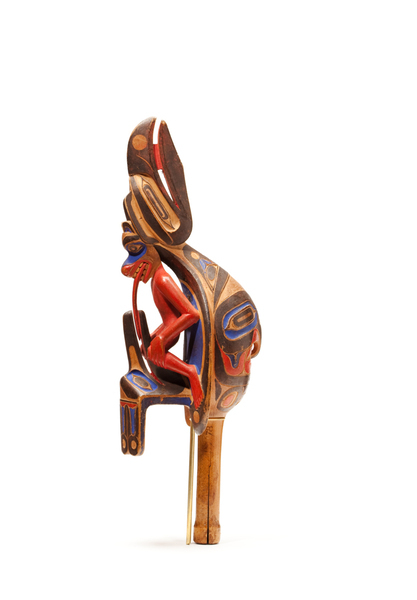
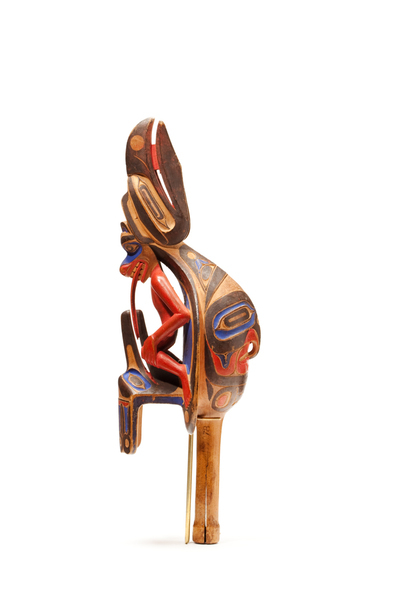

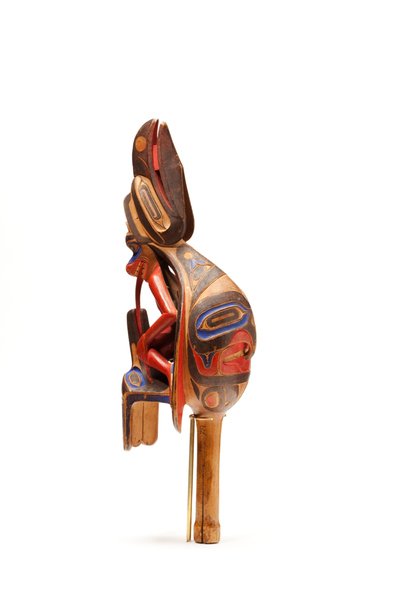


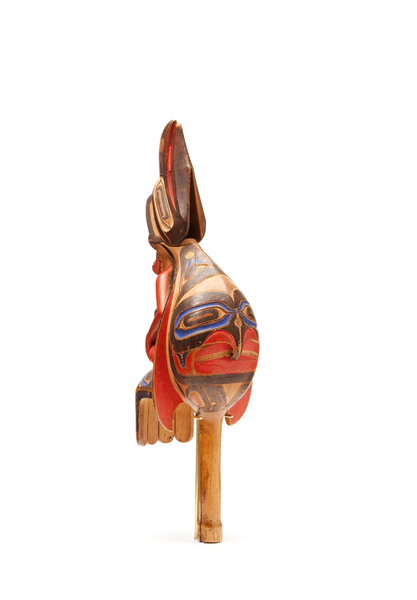

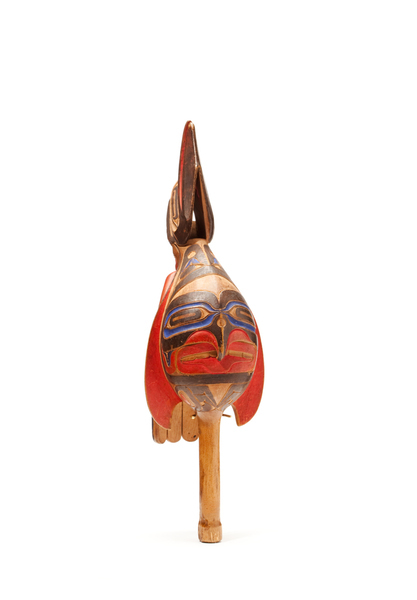
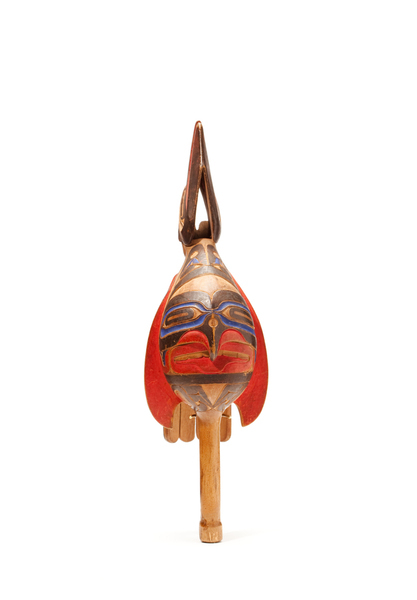




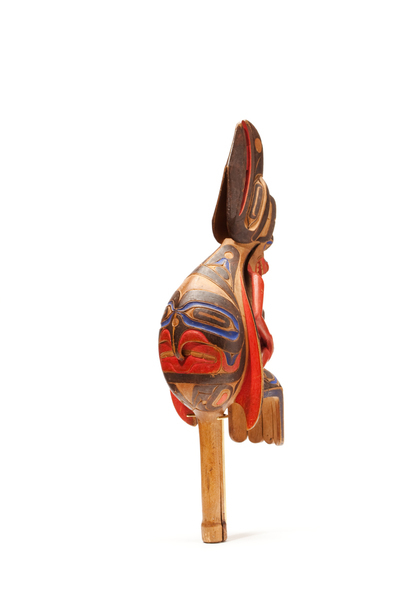
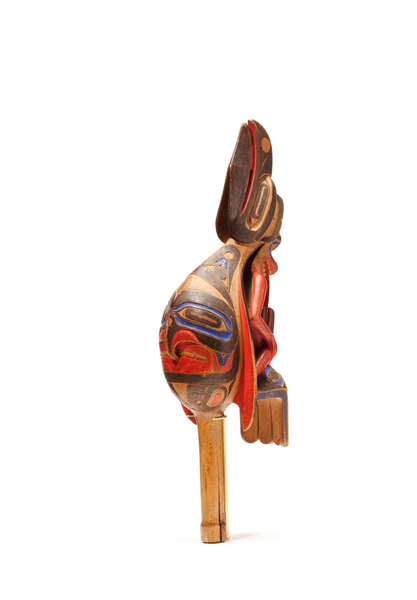
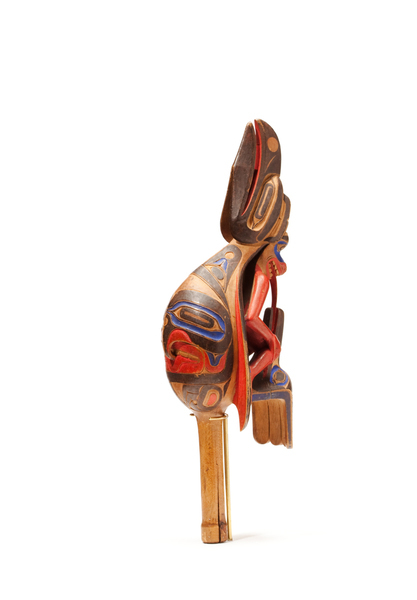
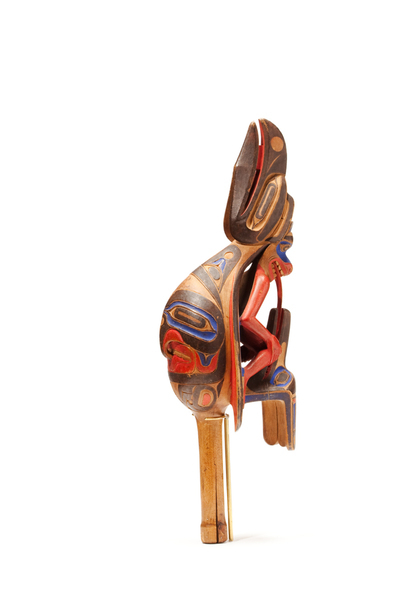





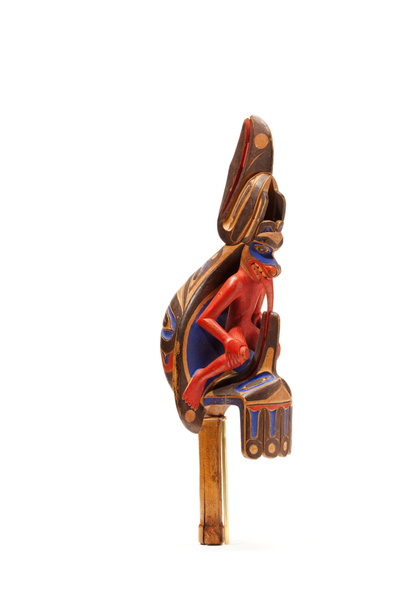
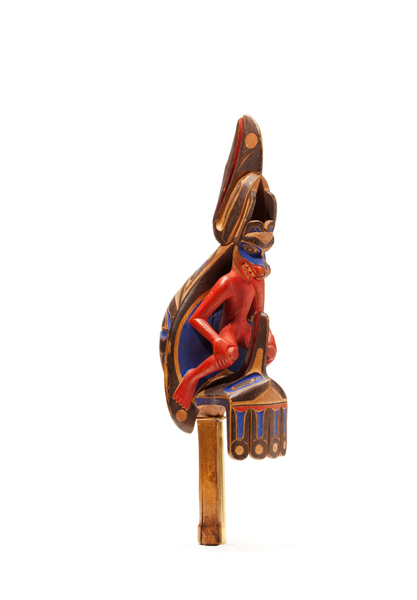

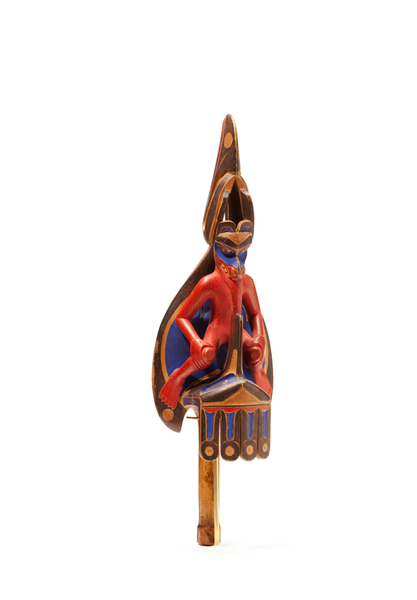


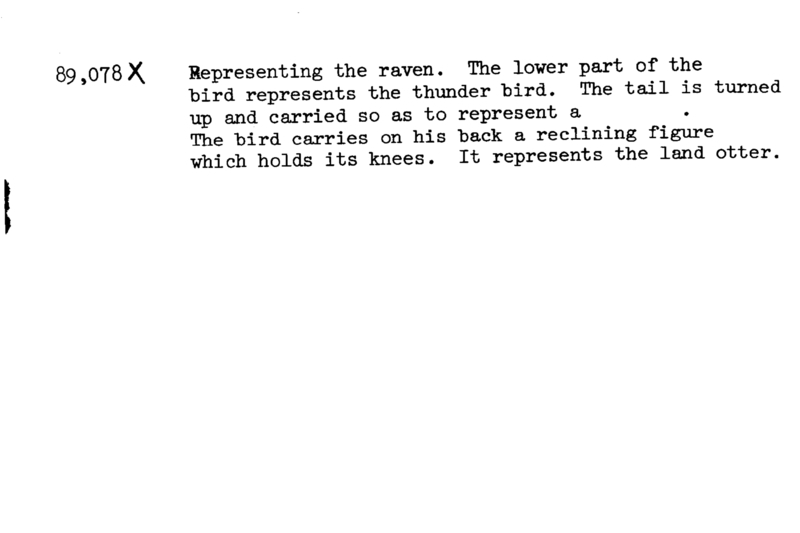
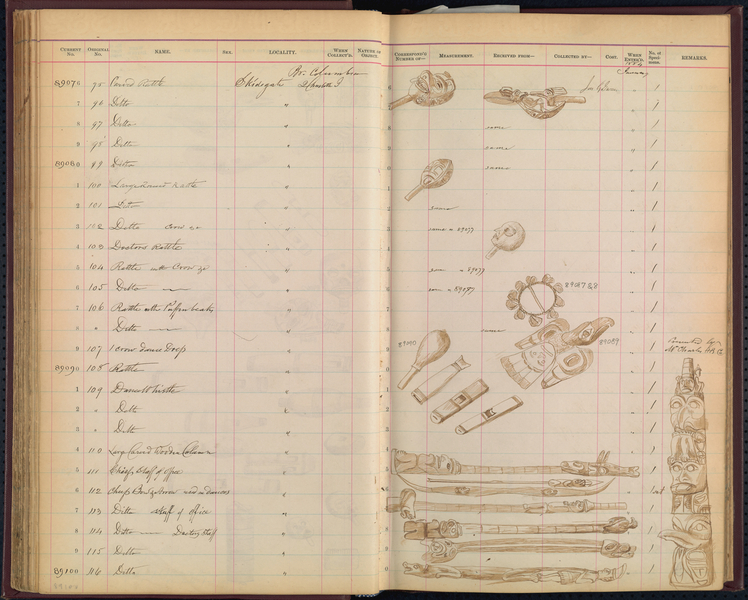
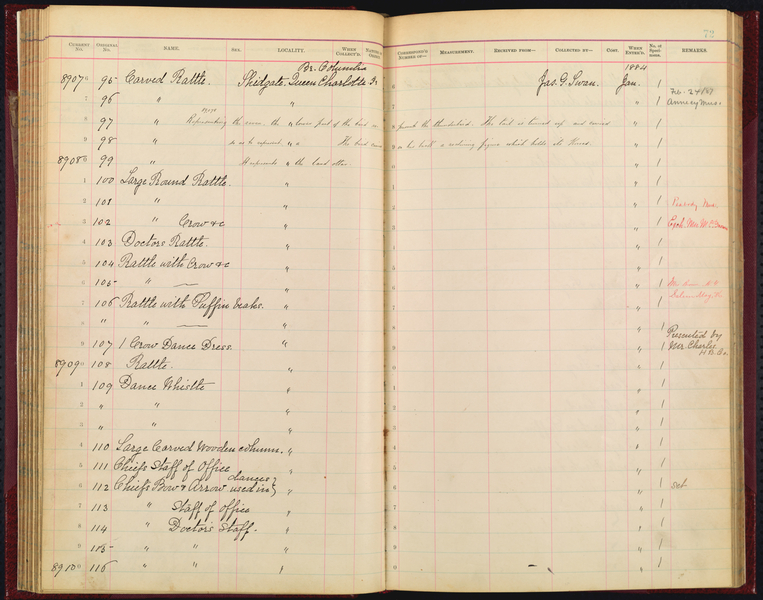
Notes
From card: "See U.S.N.M. [Annual] Report 1888, pl. LIV, fig. 288 [after p.324] .... Niblack. See pl. LIII, [after] p. 324 [for a similar rattle]. Representing the raven. [The card information that follows is from the second/copy of the Anthropology catalogue ledger book entry on this artifact, where it has been added in a different hand from the main ledger page entries:] The lower part of the bird represents the thunder bird. The tail is turned up and carried so as to represent a [blank]. The bird carries on his back a reclining figure which holds its knees. It represents the land otter."This object is on loan to the Anchorage Museum at Rasmuson Center, from 2010 through 2027.Source of the information below: Smithsonian Arctic Studies Center Alaska Native Collections: Sharing Knowledge website, by Aron Crowell, entry on this artifact http://alaska.si.edu/record.asp?id=632 , retrieved 6-24-2012: Rattle This rattle shows Raven carrying the sun in his beak. On Raven's back, a human-Ulala (Cannibal) figure extends its tongue into the beak of a crested bird, symbolizing the exchange of spiritual power between the two beings. A sparrow hawk design covers Raven's belly. Shamans, who used these rattles in healing ceremonies, believed that healing and clairvoyant powers came from birds and animals. Chiefs carried raven rattles during ceremonies of the Haida secret societies. "The humanoid is being transformed when its tongue goes into the frog or bird; the rattle is showing a transformation that is used for healing. This type of rattle was not used for evil; it was used for good. I think we have to really emphasize that this is a healing rattle." - Delores Churchill (Haida), 2005Listed on page 42 in "The Exhibits of the Smithsonian Institution at the Panama-Pacific International Exposition, San Francisco, California, 1915", in section "Arts of the Northwest Coast Tribes".
Item History
- Made in Skidegate, British Columbia, Canada
- Collected by James G. Swan in Skidegate, British Columbia, Canada during October 1883
- Received on December 21, 1883
What
- Name
- Carved Rattle (Shisha)
- Identification Number
- E89078-0
- Type of Item
- rattle
Who
- Culture
- Haida
- Field Collector
- James G. Swan
Where
- Holding Institution
- National Museum of Natural History
- Made in
- Skidegate, British Columbia, Canada
- Collected in
- Skidegate, British Columbia, Canada
When
- Collection Date
- during October 1883
- Acquisition Date
- on December 21, 1883
Other
- Accession Number
- 013804